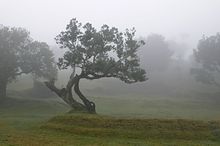Trocaz pigeon: Difference between revisions
m →Taxonomy: more |
|||
| Line 30: | Line 30: | ||
The call is a characteristic cooing ''doo-doh'', like Wood Pigeon. |
The call is a characteristic cooing ''doo-doh'', like Wood Pigeon. |
||
==Taxonomy== |
==Taxonomy== |
||
The genus ''Columba'' is the largest within the pigeon family, and has the widest distribution. Its members are typically pale grey or brown, often with white head or neck markings or iridescent green or purple patches on the neck and breast. The neck feathers may be stiffened and aligned to form grooves. One of several subgroups within Columba consists of the widespread Eurasian |
The genus ''Columba'' is the largest within the pigeon family, and has the widest distribution. Its members are typically pale grey or brown, often with white head or neck markings or iridescent green or purple patches on the neck and breast. The neck feathers may be stiffened and aligned to form grooves. One of several subgroups within ''Columba'' consists of the widespread Eurasian [[Common Wood Pigeon]], ''C. palumbus'', [[Bolle's pigeon]], ''C. bollii'' in the [[Canary Islands]], Trocaz Pigeon, and the African [[Afep Pigeon]], ''C. unicincta''. These form a subspecies, and the two island endemics are thought to be derived from isolated populations of ''C. palumbus''.<ref name= Gibbs175 >Gibbs (2000) p. 175</ref> [[DNA]] sequences from [[mitochondria]]l and [[cell nucleus|nuclear]] [[gene]]s suggest that the wood pigeon ancestor of Bolle's Pigeon may have arrived in the Canaries about 5 [[Mya]], but the lineage that gave rise to another Canaries endemic, the Laurel Pigeon, ''C. junoniae'', may date from 20 Mya.<ref name= Gonzalez>{{cite journal || last= Gonzalez | first= Javier | coauthors= Castro, Guillermo Delgado; Garcia-del-Rey, Eduardo ; Berger, Carola ; Wink, Michael | month= | year= 2009| title= Use of mitochondrial and nuclear genes to infer the origin of two endemic pigeons from the Canary Islands | journal= Journal of Ornithology | volume= 150 | issue = 2 | pages= 357–367 | url = |format = | doi = 10.1007/s10336-008-0360-4 }}</ref> |
||
== Distribution and habitat == |
== Distribution and habitat == |
||
Revision as of 10:12, 8 August 2010
| Trocaz Pigeon | |
|---|---|
| Scientific classification | |
| Kingdom: | |
| Phylum: | |
| Class: | |
| Order: | |
| Family: | |
| Genus: | |
| Species: | C. trocaz
|
| Binomial name | |
| Columba trocaz Heineken, 1829
| |

| |
Resident endemic
Former range | |
The Trocaz Pigeon (Columba trocaz), or Madeira Laurel Pigeon, is a member of the family Columbidae (doves and pigeons) which is endemic to Madeira.
It is a scarce resident breeder in caves and on mountains in the laurisilva forest zone, where 10,000 birds remain.
At 42–45 cm, it looks like a large Wood Pigeon. It is a basically grey bird, with a pinkish breast. It lacks any white markings, which together with a silvery neck patch distinguishes it from the other species of Columba.
Trocaz Pigeon breeds in caves, laying one white egg in a nest on a ledge. Its flight is quick, performed by regular beats, with an occasional sharp flick of the wings, characteristic of pigeons in general. It takes off with a loud clattering.
The call is a characteristic cooing doo-doh, like Wood Pigeon.
Taxonomy
The genus Columba is the largest within the pigeon family, and has the widest distribution. Its members are typically pale grey or brown, often with white head or neck markings or iridescent green or purple patches on the neck and breast. The neck feathers may be stiffened and aligned to form grooves. One of several subgroups within Columba consists of the widespread Eurasian Common Wood Pigeon, C. palumbus, Bolle's pigeon, C. bollii in the Canary Islands, Trocaz Pigeon, and the African Afep Pigeon, C. unicincta. These form a subspecies, and the two island endemics are thought to be derived from isolated populations of C. palumbus.[2] DNA sequences from mitochondrial and nuclear genes suggest that the wood pigeon ancestor of Bolle's Pigeon may have arrived in the Canaries about 5 Mya, but the lineage that gave rise to another Canaries endemic, the Laurel Pigeon, C. junoniae, may date from 20 Mya.[3]
Distribution and habitat

The Trocaz Pigeon is endemic to the main island of Madeira, although it formally also bred on the neighbouring island of Porto Santo. It is mainly found in the northern slopes of Madeira's mountain, but can be found in the south where patches of laurel forest remain. [1]
References
- ^ a b "BirdLife International Species factsheet: Columba trocaz ". BirdLife International. Retrieved 7 July 2010.
- ^ Gibbs (2000) p. 175
- ^ Gonzalez, Javier (2009). "Use of mitochondrial and nuclear genes to infer the origin of two endemic pigeons from the Canary Islands". Journal of Ornithology. 150 (2): 357–367. doi:10.1007/s10336-008-0360-4.
{{cite journal}}: Cite has empty unknown parameters:|1=and|month=(help); Unknown parameter|coauthors=ignored (|author=suggested) (help)
External links
- Madeira Birds: Trocaz Pigeon

